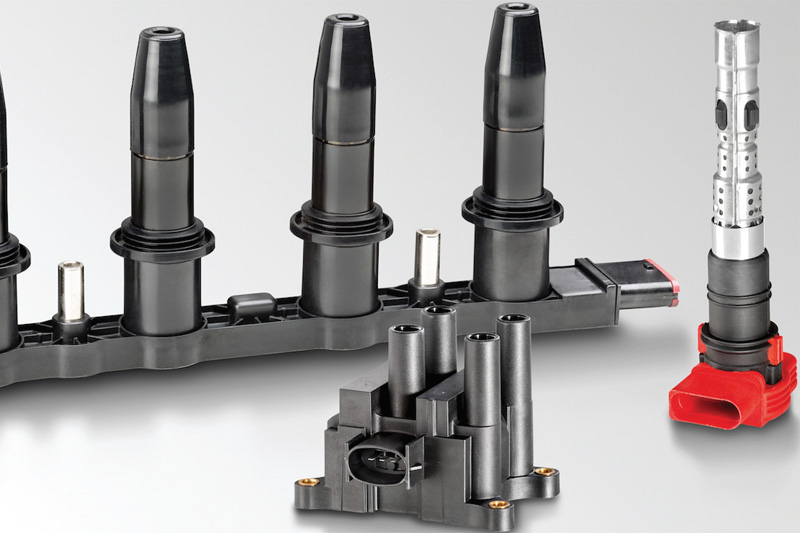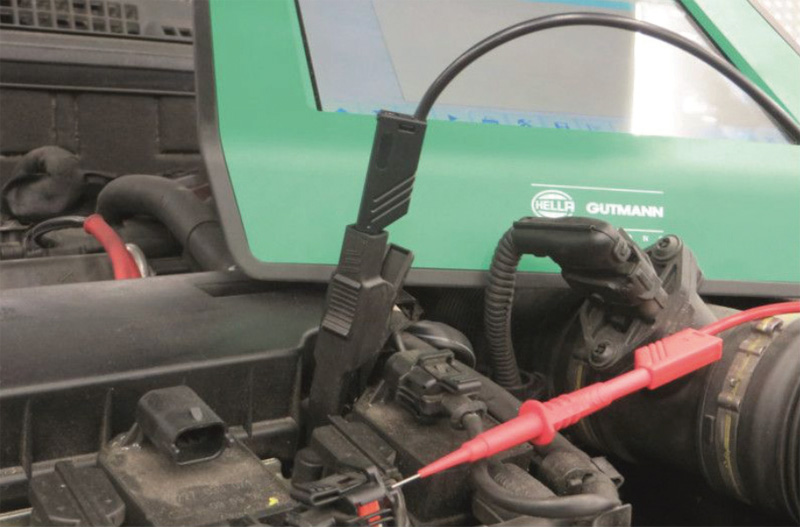
Hella’s Tech World website is helping technicians across the UK diagnose ignition coil faults. Here, we present some of the advice found on the website for measuring ignition coils.
Regardless of the type of ignition coil – single, dual or four-spark or contact/transistor controlled – the correct fault diagnosis is critical for technicians undertaking repair, which is where Hella, in conjunction with its diagnostic equipment division, Hella Gutmann Solutions, proves its worth as the workshop’s friend.
Hella’s Tech World website provides technicians with a huge technical resource from which to draw and when it comes to ignition coils this includes, among others, the following basic principles for the correct procedure to measure them.
If dismantled, there are different ways of checking the ignition coil.
Testing the resistance values of the coils using the ohmmeter. Depending on the ignition system and ignition coil design, the following reference values apply (observe the manufacturer’s specifications):
Cylinder ignition coil (transistor ignition system) – Primary: 0.5 Ω–2.0 Ω/Secondary: 8.0 kΩ–19.0 kΩ
Cylinder ignition coil (electronic ignition system with map-controlled ignition) – Primary: 0.5 Ω–2.0 Ω/Secondary: 8.0 kΩ–19.0 kΩ
Single-spark or dual-spark ignition coil (fully electronic ignition system) – Primary: 0.3 Ω–1.0 Ω/Secondary: 8.0 kΩ–15.0 kΩ

If a high-voltage diode is built into an ignition coil to suppress sparks, it is not possible to measure the resistance of the secondary coil. In this case, the following method is helpful:
Connect a voltmeter in series between the secondary winding of the ignition coil and a battery. If the battery is connected in the diode’s conducting direction, the voltmeter must display a voltage. After reversing the polarity of the connections in the blocking direction of the diode, no voltage must be displayed. If no voltage is indicated in either direction, it can be assumed that there is an interruption in the secondary circuit. If a voltage is indicated in both directions, the high-voltage diode is faulty. If installed, the following checks can be used:
Visual inspection:
- Check the ignition coil for mechanical damage
- Check the housing for hairline cracks and sealant leaks
- Check the electrical wiring and plug connections for damage and oxidation.
Check the electrics using a multimeter or oscilloscope:
- Check the voltage supply to the ignition coil
- Check the triggering signal from the ignition distributor, ignition control unit, or engine control unit
Testing with the diagnostic unit:
- Read out the fault memory of the ignition system or engine control
- Read out parameters

During all testing work on the ignition system, please note that faults established during tests with the oscilloscope are not necessarily faults caused by the electronic system; they can also be caused by a mechanical problem in the engine. This may be the case, for example, if compression is too low in one cylinder, which means the oscilloscope shows the ignition voltage for this cylinder to be lower than that of the other cylinders.
Hella has been a pioneer of sophisticated vehicle electronics for more than 60 years, supplying vehicle manufacturers globally with components and sensors for vehicle emissions, safety and comfort systems. As a result, in addition to a wide range of ignition coils, its aftermarket programme provides workshops with the electronics solutions they need to ensure they can provide an original equipment (OE) quality repair.









